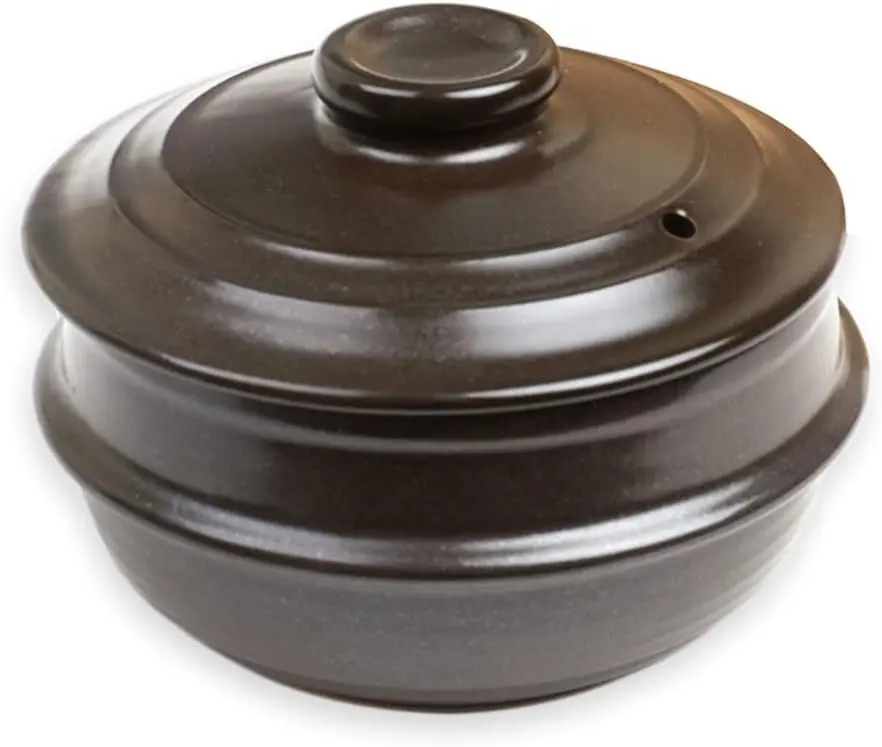Korean Earthen Ware
Kitchen to Table

Article by Gil "hannaone"
© Copyright 2024. All rights reserved.
Recommended!
Cooking With Ttukbaegi (Korean Earthen/stone ware)
In the world of traditional Korean cuisine, one cannot ignore the significance and versatility of Korean Earthenware Bowls. For over four decades, these bowls have been a staple in both our home and restaurants. Not only do they serve as a cooking vessel, but their unique design also makes them perfect for serving food. With the ability to retain heat for longer periods of time, these bowls not only enhance the taste of dishes but also add a touch of tradition to any dining experience.
History:
The ttukbaegi, a traditional Korean cooking vessel, has a long history dating back to the Goryeo Dynasty and has remained popular through the Joseon Dynasty and into modern times. In an old poem by Lee Dal Chung (이달충), known for his works in the Goryeo period, we can see evidence of ttukbaegi being commonly used when he mentions "White-makgeolli is brought to the ttukbaegi." This further confirms that ttukbaegi was already being produced and utilized during the Goryeo era.
Cooking:
One Pot dishes like Dolsot Bibimbap are so much easier to cook in Korean stone or eartenware than they are in a metal pan or electric cooker. The thick walls of these earthenware bowls distribute heat evenly, resulting in perfectly cooked rice and toppings. Additionally, the porous nature of the clay material allows for better absorption of flavors and moisture, making every bite more flavorful and satisfying. Whether you're cooking traditional Korean dishes or experimenting with fusion cuisine, Korean Earthenware Bowls are a must-have for any home cook looking to elevate their dishes to the next level.
Construction:
The shape of the ttukbaegi is unique and consists of a wide, shallow base with tall, straight sides that taper towards the top. The rim of the ttukbaegi is slightly flared to allow for easy pouring. The bottom of the pot is usually left unglazed, while the inside and outside are glazed with a clear or translucent glaze.
The construction process starts with forming the clay into a round shape on a pottery wheel or by hand. The potter then shapes and smooths out the walls of the ttukbaegi using tools like ribs or sponges. Once shaped, the pot is left to dry completely before firing.
Firing can be done in a traditional wood-fired kiln or modern electric kilns. Traditional wood-fired kilns produce unique results as each piece is exposed to varying levels of heat and ash during firing.
After firing, some potters may apply additional decoration such as patterns or designs using colored glazes or carving techniques. Finally, the pots are fired again at a lower temperature to seal in any decorations.
Seasoning and Care
Follow the manufactures instructions if included with the bowl, if not, here are some general steps to seasoning and caring for Korean Earthenware bowls:
Step 1: Rinse the bowl with clean water and scrub the inside of the bowl to remove any dust or particles. Do not use soap.
Step 2: Fill the bowl with rice (about 70-80% full) and enough water to cover the rice.
Step 3: Let the bowl sit for about 12 hours, allowing the rice to absorb some of the water.
Step 4: Drain the water from the bowl and rinse it out. The rice should have absorbed any remaining dust or particles.
Step 5: Dry the bowl completely before using it for cooking. You can place it in a warm oven to speed up the drying process.
Step 6: Wipe the interior of the bowl with sesame oil, then gently heat over low heat for at least 5 minutes. Let cool completely, then before use wipe again with a small amount of sesame or cooking oil.
Step 7: For continued care, always let your clay pot cool down before washing it. Never pour cold water into a hot pot as this could cause it to crack. Use only hot water when washing and do not use soap. If there are stubborn burnt pieces fill the bowl halfway with water, bring to a slow boil over medium low heat, and use a wooden spoon or spatula to CAREFULLY scrape the stuck bits off.
Step 8: After each use, clean your earthenware bowl by gently scrubbing it with hot water and a soft cloth or sponge. Do not use harsh abrasives or metal utensils as they can damage the surface of the clay pot. After drying wipe interior of bowl with a small amount of sesame or cooking oil.
By following these steps, you can ensure that your Korean earthenware bowl will last for years.
Note: Don't forget to get a trivet also.

